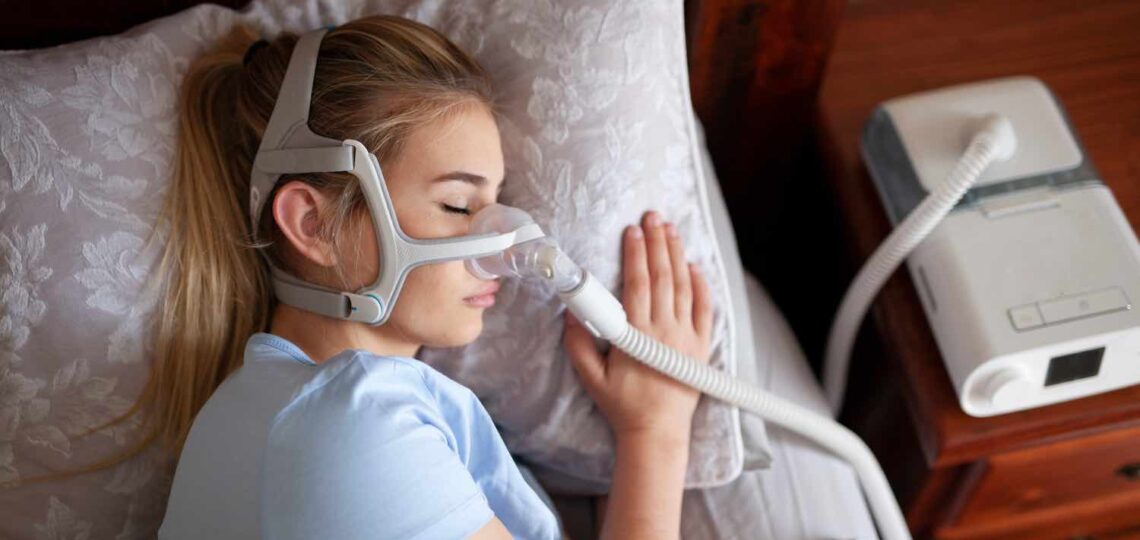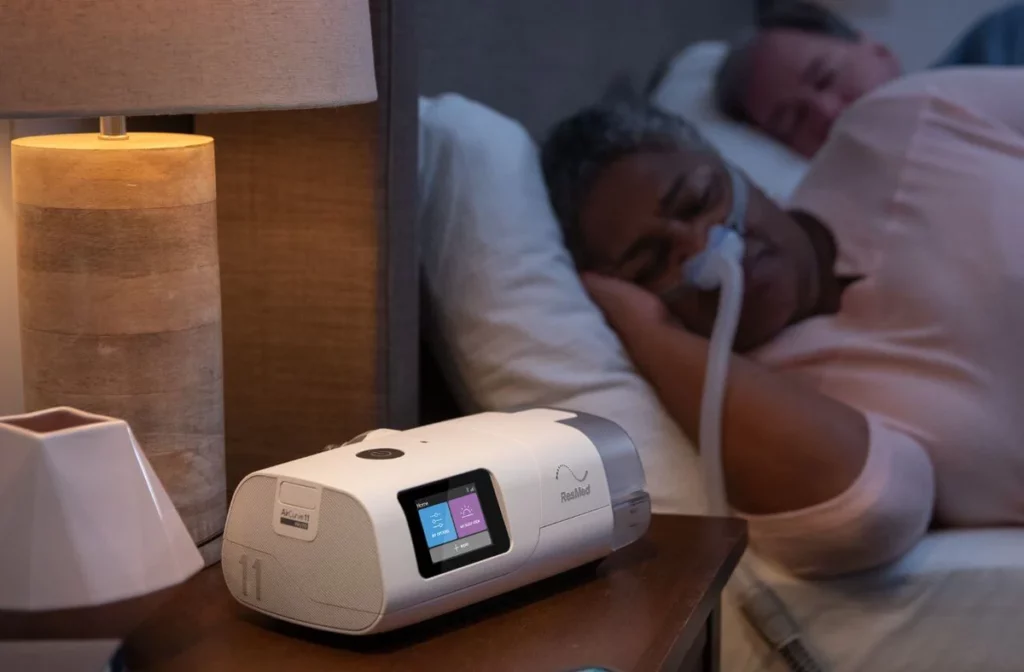
CPAP Therapy Explained: How It Helps Manage Sleep Apnea
For many people who constantly wake up feeling tired, groggy, or irritable — despite getting a full night’s sleep — sleep apnea might be the hidden culprit. This common sleep disorder affects millions worldwide, and if left untreated, it can take a serious toll on your heart, brain, and overall well-being.
Fortunately, one of the most effective and widely used treatments today is CPAP therapy — short for Continuous Positive Airway Pressure. In this article, we’ll break down what CPAP therapy is, how it works, and why it’s a game changer for improving sleep health and restoring your energy.
What Is Sleep Apnea?
Before diving into CPAP therapy, it’s important to understand what sleep apnea is and how it disrupts your rest.
Sleep apnea is a condition where breathing repeatedly stops and starts during sleep. These pauses can last from a few seconds to over a minute and occur dozens (or even hundreds) of times each night. Each episode reduces oxygen flow to your brain and body, forcing you to wake up momentarily — often without realizing it.
Types of Sleep Apnea
- Obstructive Sleep Apnea (OSA):
The most common type, caused when throat muscles relax and block the upper airway. - Central Sleep Apnea (CSA):
Occurs when the brain doesn’t send proper signals to the muscles that control breathing. - Complex Sleep Apnea Syndrome:
A combination of both OSA and CSA.
The result? Fragmented sleep, low oxygen levels, and chronic fatigue — even after what seems like a full night’s rest.
Why CPAP Therapy Is the Gold Standard for Treatment
Among various sleep apnea treatments, CPAP therapy stands out as the most reliable and effective solution, especially for obstructive sleep apnea.
How CPAP Works
A CPAP machine delivers a steady stream of pressurized air through a mask that you wear over your nose, mouth, or both while sleeping. This gentle airflow keeps your airway open, preventing collapse or obstruction.
Think of it like an invisible air splint — holding your airway open so you can breathe freely all night long.
As a result:
- Oxygen levels remain stable.
- You stop snoring.
- Your body gets uninterrupted, restorative sleep.
The Benefits of CPAP Therapy
When used consistently, CPAP therapy offers a wide range of health and lifestyle benefits:
🌙 Improved Sleep Quality
By preventing breathing interruptions, CPAP ensures you get deep, restorative sleep that helps your body and brain recover each night.
❤️ Better Heart Health
Untreated sleep apnea increases the risk of high blood pressure, heart attack, and stroke. CPAP therapy helps regulate oxygen levels, easing strain on your heart.
🧠 Sharper Focus and Energy
Users often report improved memory, alertness, and mood within weeks of starting treatment. No more morning grogginess or falling asleep during meetings.
😴 Reduced Snoring
CPAP eliminates the vibration of tissues in the throat that cause snoring, giving both you and your partner peaceful rest.
⚖️ Enhanced Overall Well-being
Proper oxygen flow improves metabolism, supports weight management, and boosts immune function.
Choosing the Right CPAP Equipment
Modern CPAP machines come with advanced features that make therapy comfortable and convenient.
Types of CPAP Machines:
- Standard CPAP: Delivers a constant air pressure throughout the night.
- Auto-CPAP (APAP): Automatically adjusts pressure based on your breathing.
- BiPAP (Bi-level Positive Airway Pressure): Offers two pressure levels — one for inhalation and a lower one for exhalation — ideal for those who find CPAP pressure uncomfortable.
Masks Come in Different Styles:
- Nasal Masks: Cover only the nose.
- Nasal Pillow Masks: Fit directly into the nostrils for minimal contact.
- Full Face Masks: Cover both the nose and mouth — best for mouth breathers.
The right mask makes all the difference, so it’s worth trying a few options under the guidance of a sleep medicine specialist.
Adjusting to CPAP Therapy
Starting CPAP therapy can feel strange at first. Some users experience mild discomfort, dryness, or pressure. But with time and adjustment, it becomes second nature.
Tips for Easier Adaptation:
- Start slowly: Wear the mask for short periods during the day.
- Use the ramp feature: Gradually increases air pressure as you fall asleep.
- Keep your equipment clean: Regular cleaning prevents infections and ensures airflow.
- Be patient: Most users adjust fully within a few weeks.
Remember, consistency is key. Regular nightly use delivers the best results.
Real-Life Example: The Power of CPAP Therapy
Take Sarah, a 42-year-old nurse who spent years struggling with fatigue, mood swings, and brain fog. After undergoing a sleep study, she was diagnosed with moderate obstructive sleep apnea.
Within two weeks of starting CPAP therapy, Sarah reported feeling “like a new person” — more focused, alert, and energetic. Her headaches vanished, and she finally woke up feeling refreshed.
This transformation is common among CPAP users who stick with treatment and make small lifestyle improvements along the way.

Complementary Lifestyle Changes
While CPAP therapy is effective on its own, combining it with healthy lifestyle choices can further reduce sleep apnea symptoms.
🏃♂️ Exercise Regularly
Improves muscle tone, reduces weight, and enhances breathing efficiency.
🥗 Eat a Balanced Diet
Avoid heavy meals before bedtime and limit processed foods that contribute to weight gain.
🚭 Quit Smoking
Smoking inflames the airway and worsens apnea symptoms.
🍷 Avoid Alcohol and Sedatives
These relax the throat muscles and make airway obstruction more likely.
💤 Sleep on Your Side
Helps prevent airway collapse, especially in people with mild apnea.
The Importance of Regular Sleep Studies
Even after starting CPAP therapy, ongoing sleep studies or follow-up consultations ensure your pressure settings remain optimal. These evaluations help your doctor track progress, monitor oxygen levels, and fine-tune your equipment for maximum comfort and effectiveness.
Final Thoughts: Restoring Sleep, Restoring Health
Sleep apnea may be a silent disruptor, but with CPAP therapy, you can take back control of your nights — and your health. By keeping your airway open, CPAP ensures your brain and body receive the oxygen they need for deep, rejuvenating sleep.
If you or someone you love snores loudly, wakes up gasping, or feels exhausted no matter how long they sleep, it’s time to talk to a sleep specialist. A simple sleep study could be the first step toward life-changing rest.
Your journey to better sleep health starts with one night — and one breath — at a time.
FAQS
Sleep apnea is a sleep disorder where breathing repeatedly stops during rest. This disrupts oxygen flow and prevents deep sleep, leading to fatigue, heart strain, and other health issues. If untreated, it can increase the risk of heart disease, stroke, and diabetes.
Common signs include loud snoring, gasping for air during sleep, excessive daytime fatigue, and morning headaches. You might also experience poor concentration and mood changes. If these symptoms persist, a sleep study can help confirm the diagnosis.
Using CPAP therapy consistently, maintaining a healthy diet, exercising regularly, and sleeping on your side can improve sleep quality. Avoiding alcohol, caffeine, and heavy meals before bed also helps minimize breathing interruptions.
People who are overweight, smoke, or have a family history of sleep disorders are at higher risk. Men over 40 are more prone, but sleep apnea can affect anyone — including women and even children.
